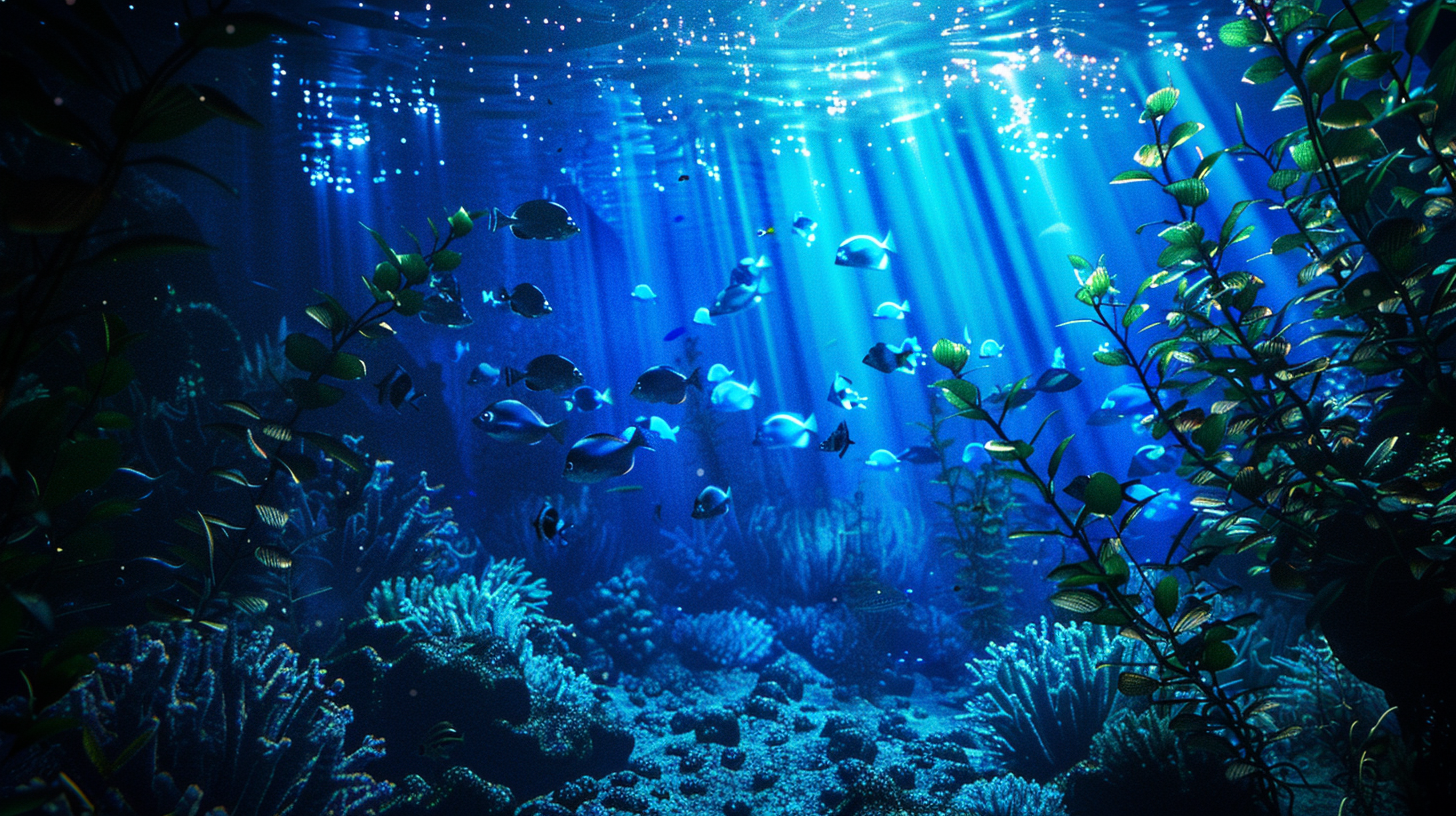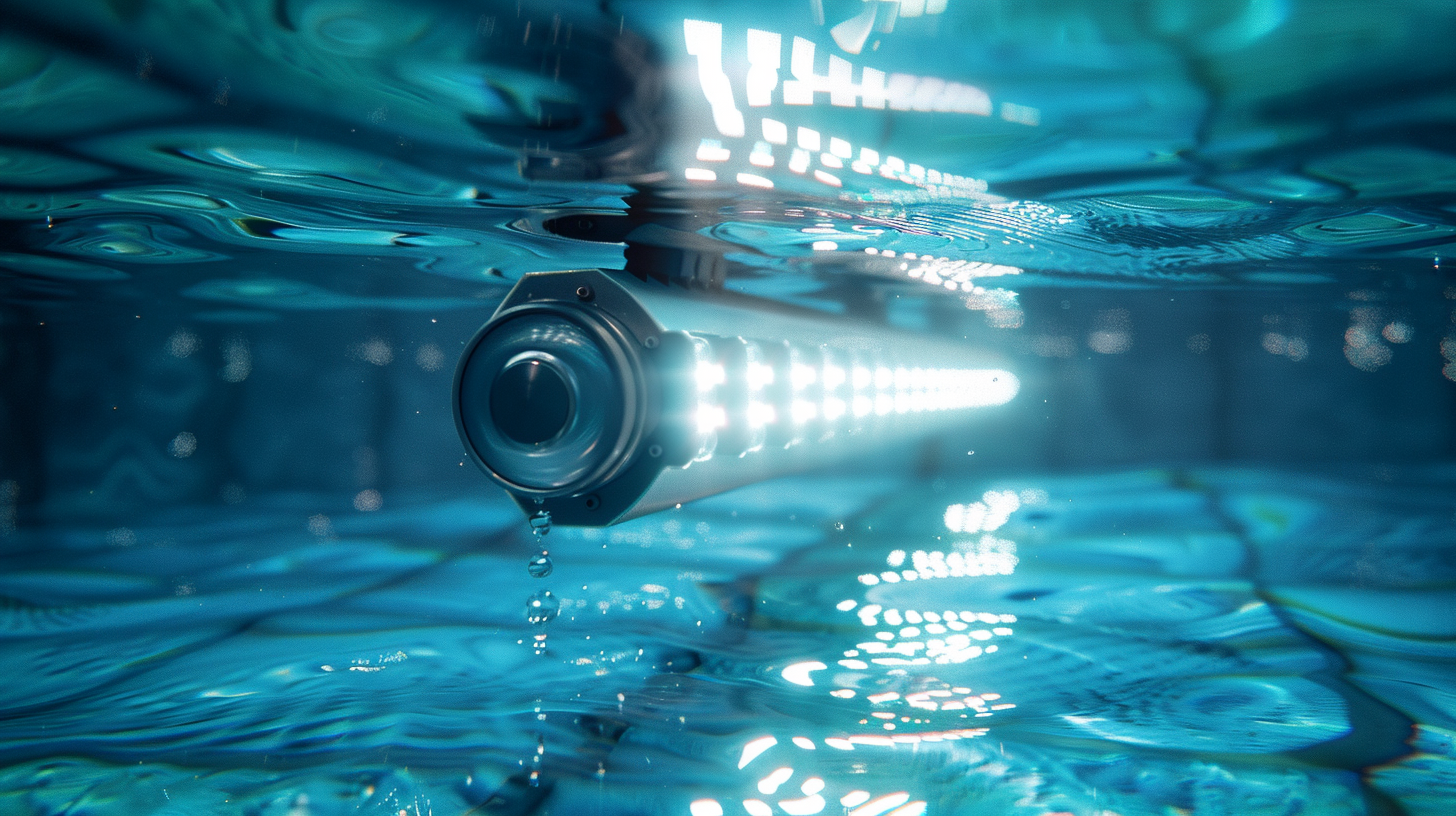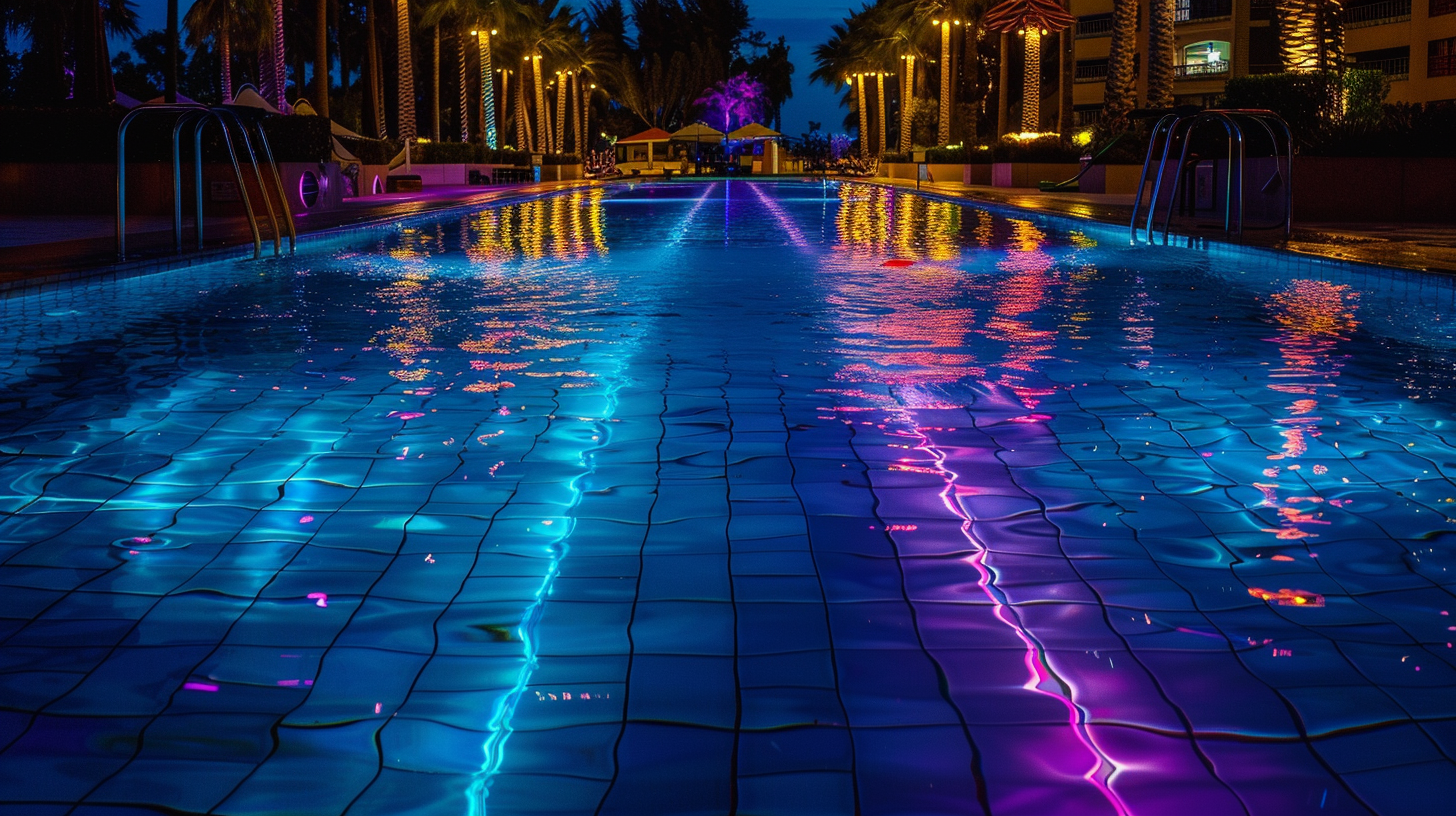Comparing underwater boat lights: LED vs. halogen
When it comes to underwater lights, one of the primary factors to consider is light efficiency and brightness. LED lights shine brightly in this category—pun intended! These lights provide an impressive luminescence that is often superior to halogen lights. In the LED vs halogen debate, LEDs tend to offer a more focused and intense beam, making them ideal for illuminating the depths beneath your boat.
Halogen lights, on the other hand, have been around for a much longer period and are known for their warm and inviting glow. However, this type of lighting pales—quite literally—in comparison to the sharp and vivid brightness that LEDs produce. Whether you’re diving, snorkeling, or just enjoying an evening on the water, the enhanced clarity from LED lights can significantly improve your underwater experience.
Brightness levels are essential in ensuring safety as well. LED lights can penetrate deeper into the water, offering better visibility and reducing the chances of running into obstacles hidden below the surface. Halogen lights, while adequate for close-range illumination, may not offer the same level of security when navigating darker or murkier waters.
Ultimately, the battle of LED vs halogen in terms of light efficiency and brightness ends with LEDs taking a decisive lead. Their superior capabilities not only enhance the aesthetic appeal of your boat lighting but also contribute to a safer and more enjoyable maritime adventure.
Energy consumption
When considering the energy consumption of underwater lights, it’s crucial to understand how each type of light impacts your boat’s overall energy efficiency. In the LED vs halogen debate, LED lights come out as clear winners in this category. LEDs are known for their incredible energy efficiency; they consume significantly less power compared to their halogen counterparts. This advantage can make a noticeable difference, especially on longer voyages where energy conservation is critical.
Halogen lights, while providing adequate illumination, tend to be much less efficient. These lights require more power to produce the same amount of brightness as LED lights. This higher energy consumption not only drains your boat’s battery faster but can also lead to increased fuel usage if you’re relying on a generator to power your lights. For boaters who spend extended periods on the water, the energy inefficiency of halogen lights can become a considerable drawback.
Furthermore, the lower energy requirements of LED lights mean that your boat’s electrical system remains under less strain. This is especially beneficial for older vessels where the electrical infrastructure might not be as robust. Reducing the load on your system can help prolong the life of your battery and other critical components, allowing for smoother and more reliable boat operations.
Another noteworthy point in the LED vs halogen comparison is that LEDs generate significantly less heat. The energy-efficient nature of LED lights ensures minimal heat production, which can be a lifesaver in maintaining a cooler environment on board. On the other hand, halogen lights can become quite hot, posing not only an energy concern but also a potential safety hazard.
Therefore, if energy consumption is a top priority for your boat lighting, LED lights stand out as the more efficient and sensible choice. Their low power usage, paired with reduced heat output, makes them an ideal option for extended maritime adventures, providing both economic and environmental benefits.
Durability and lifespan
When it comes to the longevity and durability of underwater lights, there’s a stark contrast between LED and halogen options. LEDs are widely recognized for their superior lifespan, a significant advantage in the LED vs halogen debate. Typically, LED lights can last anywhere from 25,000 to 50,000 hours, providing years of reliable performance even with regular use. This extended lifespan is largely due to the solid-state technology they utilize, which is inherently more resistant to shocks and vibrations—a vital feature for the often rough conditions of maritime environments.
In comparison, halogen lights are considerably less durable, usually offering between 2,000 to 4,000 hours of light before needing a replacement. Halogens operate by heating a tungsten filament until it glows, a process that not only consumes more energy but also creates a lot of heat, which can accelerate wear and tear. The filaments in halogen lights are prone to breakage, especially in the high-impact marine setting where waves and engine vibrations are constants.
Another critical aspect to consider is the susceptibility to corrosion and water ingress, particularly given the harsh marine environments underwater lights are exposed to. LED lights are often housed in hermetically sealed units with robust, marine-grade materials that resist both corrosion and water penetration. These features make LEDs a more reliable choice for long-term use under the sea, minimizing the risk of water damage.
On the other hand, halogen lights may not always offer the same level of protective casing, requiring more frequent inspections and maintenance to ensure they remain water-tight. Any breach in their seals can lead to rapid deterioration and eventual failure, posing a significant inconvenience and additional maintenance cost for boat owners.
Furthermore, LEDs tend to maintain their performance over time better than halogen lights. As halogens age, their light output gradually diminishes, which means you’ll get progressively dimmer illumination the longer they are in use. LEDs, however, maintain a more consistent light output and only demonstrate a noticeable reduction in brightness near the very end of their lifespan.
Given these factors, the comparison clearly leans in favor of LED lights when it comes to durability and lifespan. For boaters seeking reliable and long-lasting underwater lighting, LEDs offer unmatched longevity and resilience, making them the smarter investment. Whether you’re sailing through calm waters or navigating choppy seas, the robust nature of LED lights ensures that your boat lighting remains effective and dependable in all conditions.
Installation and maintenance
For those considering the ease of installation and the maintenance needs of underwater lights, the LED vs halogen debate presents some noteworthy distinctions. Generally speaking, LEDs have an edge due to their compact size and more intuitive installation processes. Because LED units are typically smaller and lighter than halogen counterparts, they can be mounted with less effort and adapted to a wider variety of boating configurations.
Moreover, many LED underwater lights come with plug-and-play features, simplifying the wiring and mounting procedures. These lights often include built-in drivers and pre-sealed units, reducing the need for additional components. Instructions are usually straightforward, allowing even those with limited technical know-how to perform the installation confidently.
Halogen lights, however, might require a bit more work. Their larger housing and higher heat output necessitate careful planning to ensure proper ventilation and cooling. Additional components such as external ballasts or heat sinks may be required, and the increased complexity can lead to longer installation times and potentially the need for professional help.
When it comes to maintenance, LEDs demonstrate clear advantages. Due to their robust construction and sealed nature, LED lights require significantly less upkeep. Their resistance to shocks, vibrations, and water ingress makes them durable fixtures that perform reliably over extended periods. Consequently, boaters can spend less time worrying about maintenance and more time enjoying their aquatic adventures.
In contrast, halogen lights demand more frequent attention. The higher operating temperatures can accelerate wear and tear, leading to more frequent replacements of bulbs and other components. Additionally, halogen units are more susceptible to damage from vibrations and impacts, common on boats. Cleaning and ensuring that the seals remain intact to prevent water intrusion can also be recurring tasks, further adding to the maintenance burden.
Here’s a comparative overview of the installation and maintenance factors:
| Aspect | LED Lights | Halogen Lights |
|---|---|---|
| Installation Complexity | Generally simple, often plug-and-play | More complex, may require additional components |
| Installation Time | Quick, can often be a DIY project | Longer, might need professional assistance |
| Maintenance Frequency | Low | High |
| Resistance to Shock and Vibration | High | Low |
| Susceptibility to Water Damage | Low | High |
Given the comparison, it’s clear that LEDs outshine halogens in the areas of installation and maintenance. For boating enthusiasts seeking efficient, low-maintenance underwater lighting, LEDs are certainly the more practical and user-friendly choice. Whether for their straightforward installation or minimal upkeep requirements, LEDs provide a hassle-free lighting solution that stands the test of time.
Cost analysis and budget considerations
Analyzing the cost implications in the LED vs halogen underwater lights debate can truly illuminate—pun intended—your final decision. At first glance, the upfront costs of LEDs might seem daunting. Typically, LEDs have a higher initial price point compared to halogen lights. This price difference is primarily due to the advanced technology and materials used in manufacturing LEDs, which are designed for longevity and efficiency. However, focusing solely on the initial expenditure can be misleading.
Considering the total cost of ownership offers a more comprehensive perspective. LEDs, despite their higher initial cost, prove to be more economical over the long term. One of the key advantages is their lower energy consumption. Because LEDs draw significantly less power, they can reduce your boat’s overall energy usage, leading to savings on fuel if you’re running off a generator, and less frequent battery replacements. Over time, these savings can add up, making the initial investment in LEDs more justifiable.
Maintenance costs also heavily favor LEDs. Their extended lifespan, often ranging between 25,000 to 50,000 hours, means fewer replacements and less frequent maintenance. In comparison, halogen lights typically last between 2,000 to 4,000 hours, leading to regular purchases of replacement bulbs and the associated labor costs for installation. Reducing these ongoing expenses can have a substantial impact on your budget, particularly for avid sailors who use their boat lighting extensively.
Another financial consideration is the cost linked to downtime. LED lights, given their durability and resilience against marine conditions, are less likely to fail unexpectedly. This reliability ensures that boaters face fewer interruptions and inconveniences, potentially avoiding costly, unscheduled maintenance sessions. Halogen lights, due to their more fragile construction and greater susceptibility to water damage and vibrations, are more likely to fail without notice, leading to unplanned expenses and wasted time.
Lastly, it’s worth noting the environmental and long-term economic benefits of choosing LEDs. With their lower energy consumption and longer lifespan, LEDs contribute less to landfill waste and reduce the overall carbon footprint associated with boat lighting. This eco-friendly aspect can be appealing for boaters conscious of their environmental impact, and in some regions, it might even translate into eligibility for green incentives or rebates, further offsetting the initial investment.
When comparing the cost considerations of LED vs halogen underwater lights, the evidence leans in favor of LEDs. While the upfront expenditure is higher, the long-term savings in energy, maintenance, and replacements paint a clear picture: LEDs are a wise financial investment for boat owners. Their durable nature, coupled with lower operating costs, makes them a cost-effective solution that ensures both economic and environmental benefits. Whether you’re planning for short-term outings or extended voyages, the financial edge of LEDs underscores their superiority in the realm of boat lighting.


